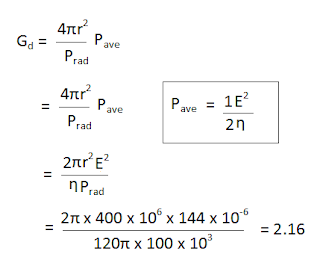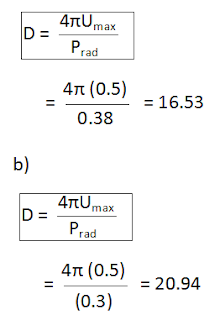SOLVED Numerical's - Antenna Theory - Page 7.

19) At the far field, an antenna produces Calculate the directive gain and the directivity of the antenna? SOLUTION: 20) For a thin dipole λ/16 long, find the a) Directive gain b) Directivity c) Effective area d) Radiation resistance SOLUTION: a) On substituting we get, G φ = 1.5 sin 2 θ b) Directivity , D = G φ, max = 1.5 c) Effective Area , A e = (λ 2 / 4π) G φ = (1.5 λ 2 sin 2 θ) / 4π d) Radiation Resistance R rad





